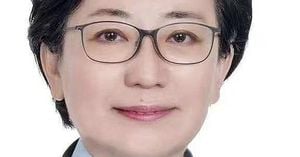Japan's public pension system is at the center of an escalating debate, particularly among the youth who are increasingly questioning its viability. The Ministry of Health, Labor and Welfare has initiated discussions through their publication aimed at 20-year-olds, revealing a growing sentiment that young individuals will pay more in premiums than they will receive in pension benefits.
Young people are raising concerns about the fairness of the public pension system, expressing the viewpoint that "it's said that young people lose out on public pensions, but is that true?" This query captures the skepticism felt by many, as they find themselves questioning the logic behind contributing to a system that may not yield any benefits for them.
The Ministry reassures that the public pension system is designed to provide peace of mind by preparing for risks such as old age, disability, and death that everyone might face. However, as many young people retort, when it comes to finances, considerations of benefit and loss can't be ignored. One posting on X (formerly Twitter) candidly asserts, "When it comes to money, everyone thinks about gains and losses," echoing the widespread sentiment among the younger generation.
The formal discussions surrounding these concerns are not happening in isolation. Taro Kono, a member of the ruling Liberal Democratic Party, has openly called for fundamental reforms in Japan's pension system, which is up for review every five years. In the current setup, contributions from employees fund the payments to retirees, a method known as the pay-as-you-go model. This structure has come under intense scrutiny, especially in light of Japan's demographic shifts, where an aging population results in a smaller workforce supporting a larger retiree demographic.
As scheduled for 2025, pension benefits are set to increase by 1.9%. However, experts warn that even with this nominal increase, there may be a real decline in the actual value received by pensioners due to rising costs of living and other economic pressures. This has heightened the sense of urgency surrounding calls for reform.
The two-tiered pension structure currently in place combines a basic pension, available to all contributing workers, with the Employees' Pension system that primarily benefits salaried workers. In light of the current environment, several proposals are being floated to better equip the pension system. One proposal includes utilizing resources from the Employees' Pension reserve fund to bolster the basic pension amount, ensuring a more equitable distribution.
Another avenue of reform is the inclusion of part-time workers into the Employees' Pension system, which would diversify the funding sources and could alleviate some of the financial strain currently felt by younger generations. Kono stresses the need for "fundamental reforms that are not just a superficial fix," implying the necessity for systemic changes that target the root of the discontent.
However, the Ministry’s response to the financial anxieties expressed by the younger demographic may still fall flat. In one informal reaction shared online about the argument that public pensions shouldn't be viewed through a financial loss lens, a user mentioned, "Saying it's not about gains and losses makes me want to contribute the minimum amount." This reaction reflects a pervasive concern that unless there is a tangible benefit in it for them, young individuals might disengage from contributing to a system meant to support future generations.
As the Liberal Democratic Party holds discussions regarding potential reforms, the importance of including diverse perspectives—especially those of younger people—becomes critical. Their voices are pivotal in shaping a pension system reflective of current societal needs, recognizing that demography is not static, but rather dynamic, requiring adaptive measures.
In light of the ongoing discussions, it is imperative for the government not just to reassure nervous young voters but to enact substantive changes that can make the public pension system both equitable and sustainable. Addressing the inherent inequality perceived by younger contributors is no longer merely a matter of policy but a pressing issue of social trust and economic stability.
The public pension system in Japan encapsulates a larger conversation about intergenerational equity and the responsibilities borne by different age groups within society. As Japan grapples with its aging population and shrinking workforce, forthcoming reforms will play a crucial role not only in retaining the trust of young contributors but also in ensuring that all segments of the society are adequately supported.





